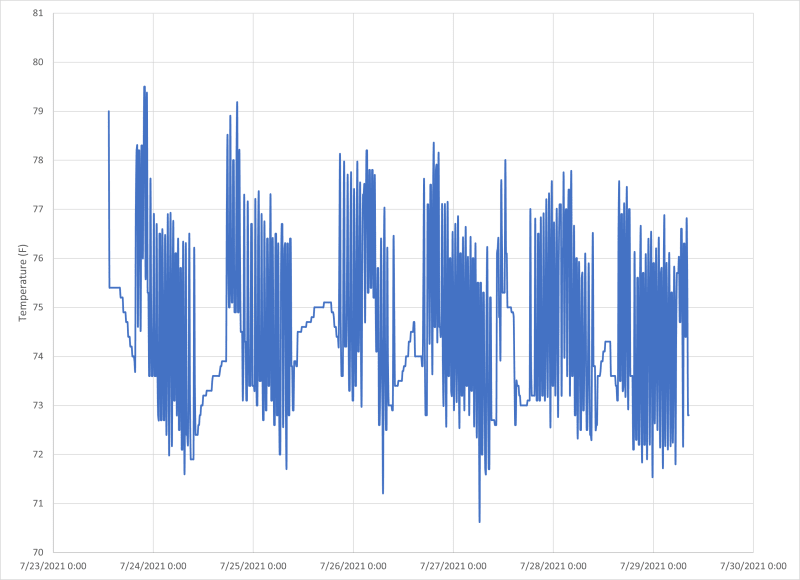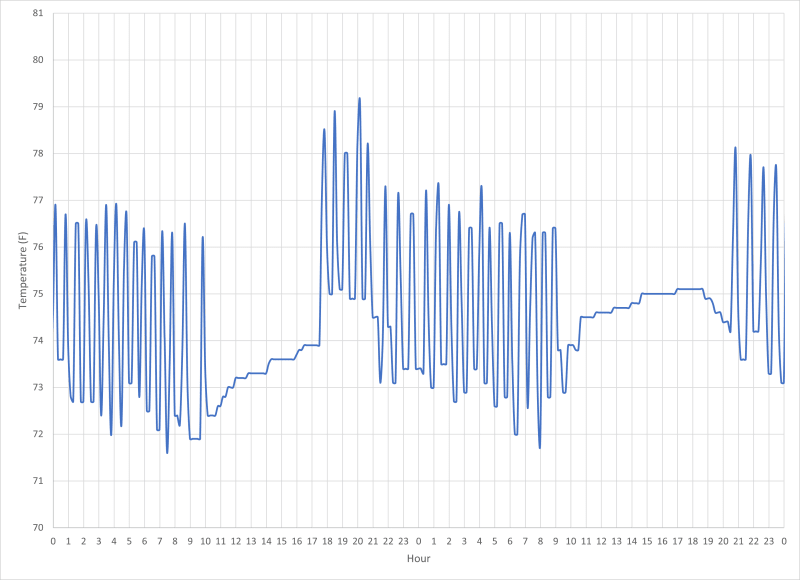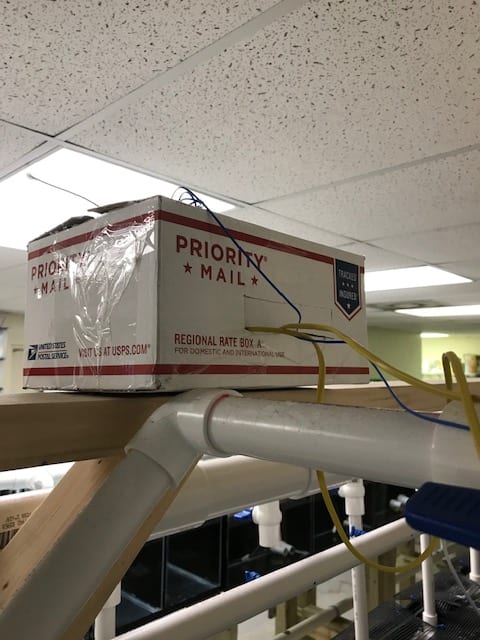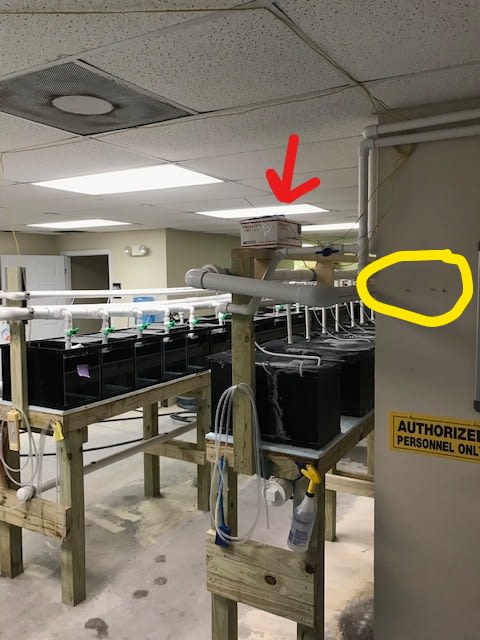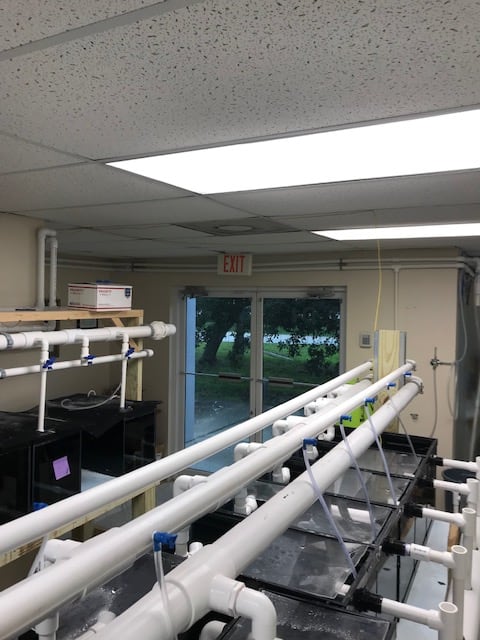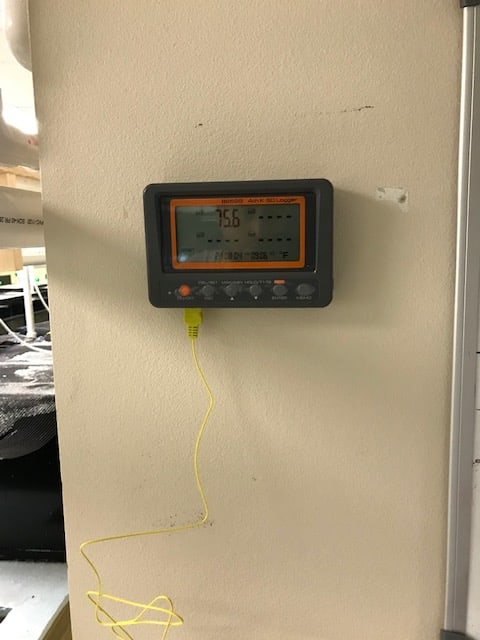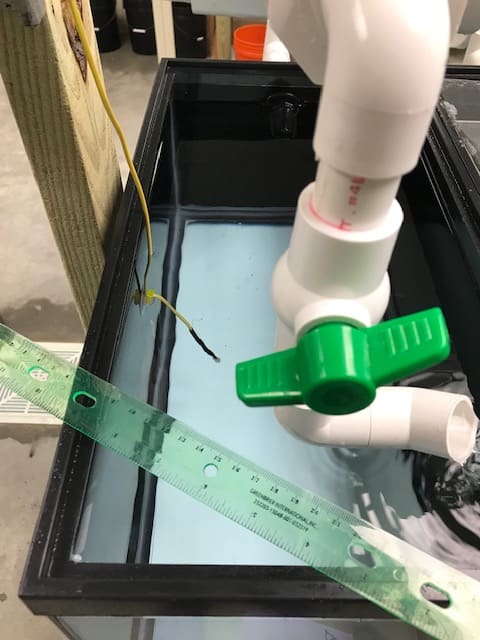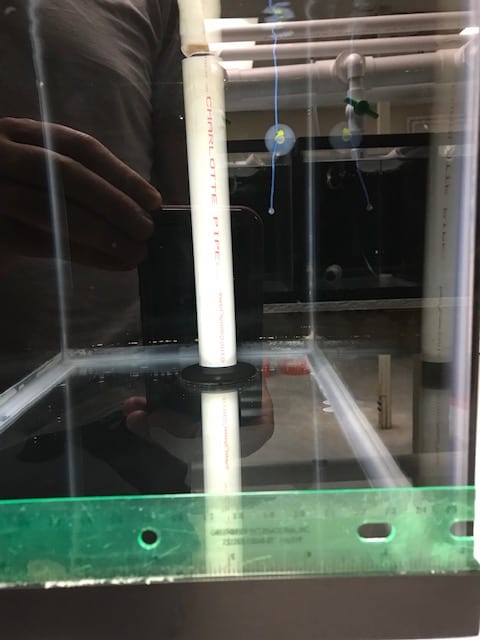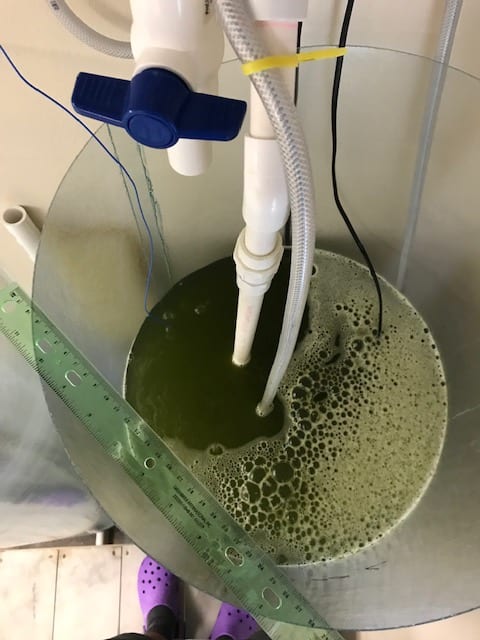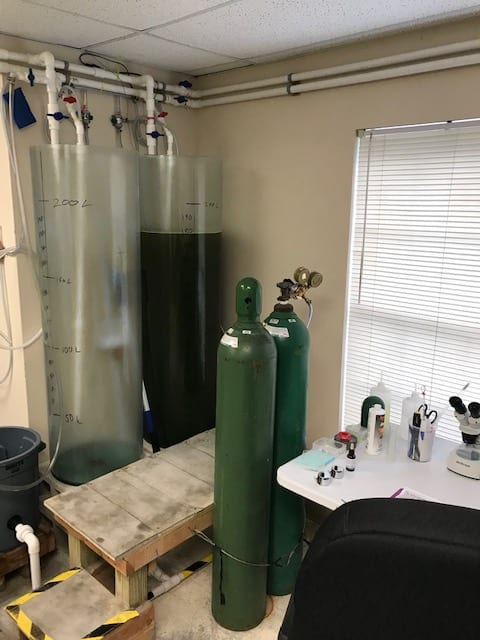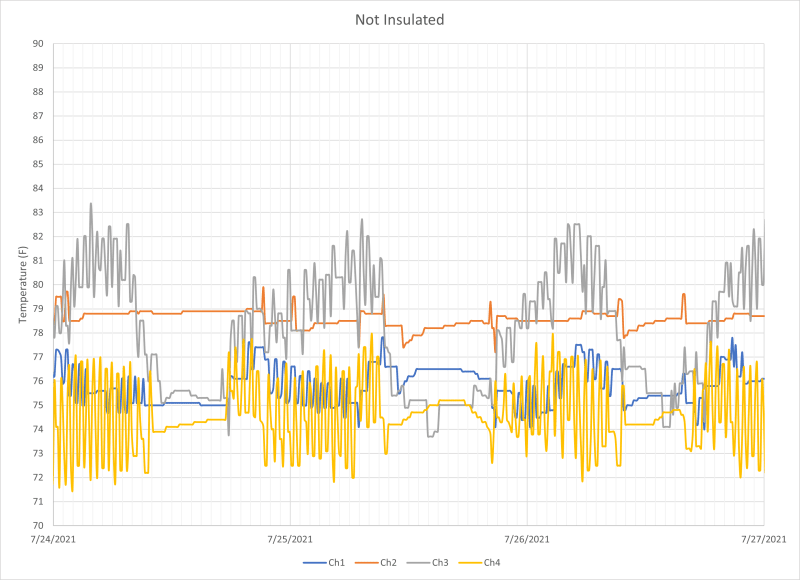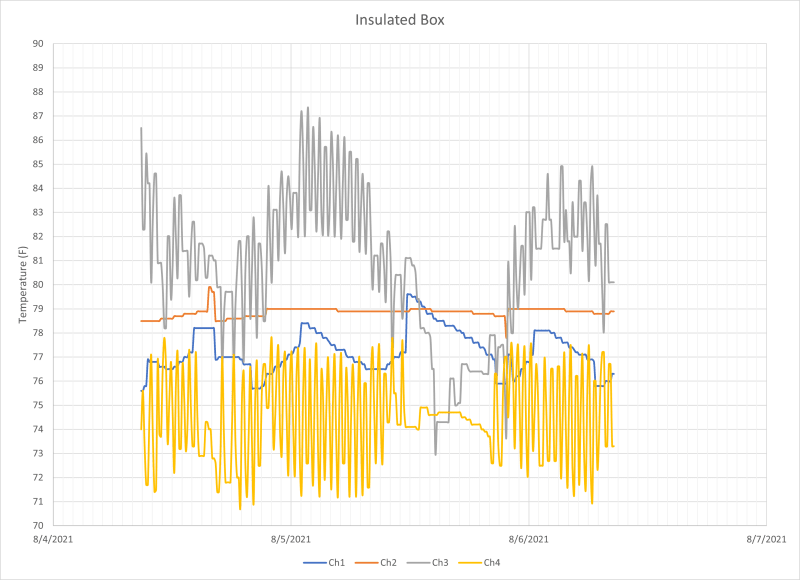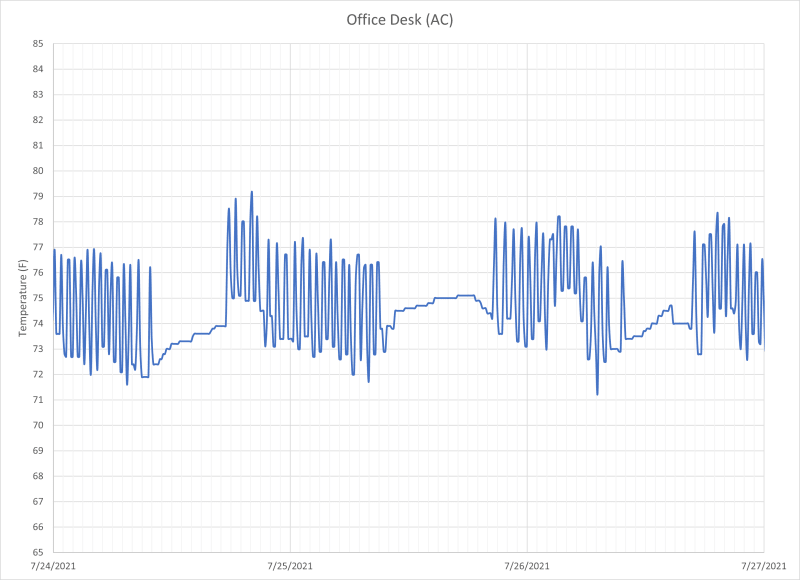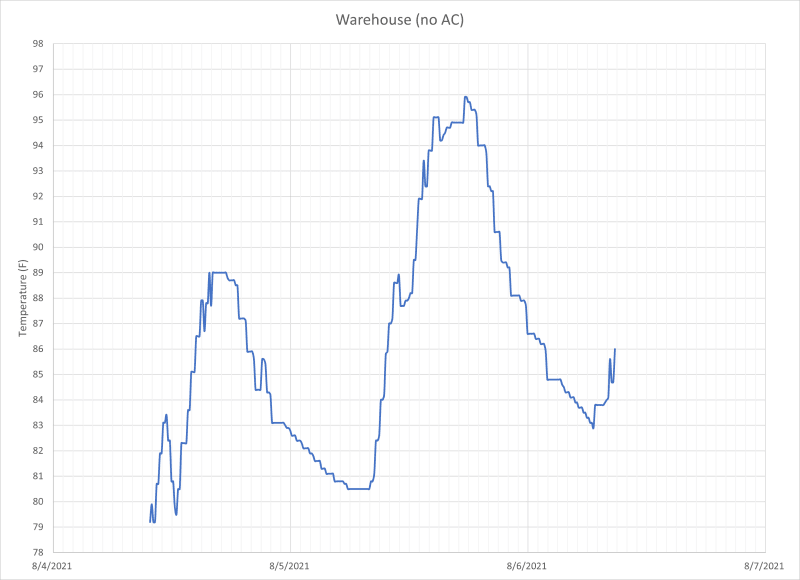Thank you all for the replies.
I recorded some new data with the setup shown in my previous post. Unfortunately, the box did not remove the noise.
I also recorded some data using an identical datalogger in an
un-air-conditioned warehouse, and compared it to the original data from the air-conditioned office (original post). There was no noise in the warehouse data.
It seems that the AC cycling is the problem, but the insulation that I used was insufficient.
Does the entire length of every thermocouple need to be insulated?
Another thing that is odd: Two of the channels are not getting the same degree of noise. The thermocouples are not identical:
Thermocouple #1: A K-type extension wire with the end stripped and twisted together, then covered with hot glue. In a 10-gallon tank.
Thermocouple #2: A K-type thermocouple, end covered in hot glue. In a 10-gallon tank.
Thermocouple #3: A K-type thermocouple, spliced with extension wire (for length), end covered in hot glue. In a 200-liter tank.
Thermocouple #4: A K-type thermocouple, end covered in hot glue. Measuring room temperature.
Channels 1 and 2 are not getting the same noise (except for channel 1 before the insulated setup - but still to a lesser degree than channels 3 and 4).
Any ideas on what is going on here?
Also, the noise seemed to get
worse for channels 3 and 4 after insulating the logger (the chart scales below are identical for easy comparison).
Thoughts?
Edit: Now that I think of it, it might have just been a hotter series of days outside.
Shown below are the results for:
1) Original water tanks/room temp setup with uninsulated datalogger.
2) The same setup with the insulated box, pictured in my previous post.
3) Room temperature sitting on an office desk in an air-conditioned room.
4) Room temperature in an un-air-conditioned warehouse.
1) Original uninsulated setup
2) Insulated setup
3) Air-conditioned office
4) Un-air-conditioned warehouse
